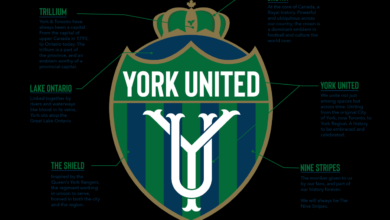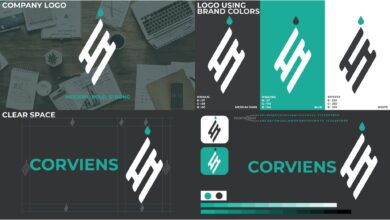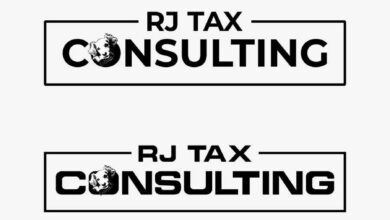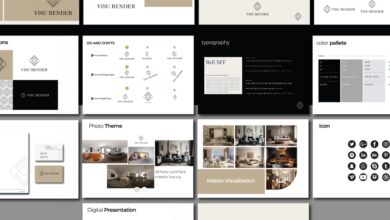
What is Brand Development? Do I Need It?
What is brand development do i need it – What is brand development? Do I need it? That’s the million-dollar question many businesses grapple with. Building a strong brand isn’t just about a logo; it’s about crafting a compelling story, connecting with your audience on an emotional level, and ultimately driving growth. This post dives deep into what brand development entails, exploring its benefits, and helping you determine if it’s the right investment for your business.
We’ll cover everything from defining your brand’s core values and crafting a killer visual identity to understanding the importance of consistent messaging across all platforms. Think of it as building a house – you wouldn’t start constructing without a solid blueprint, right? Brand development provides that blueprint, ensuring your business is built to last and stands out from the crowd.
Defining Brand Development
Brand development is the strategic process of creating and shaping a brand’s identity, image, and overall market presence. It’s about more than just a logo; it’s about crafting a compelling narrative that resonates with your target audience and differentiates you from competitors. Successful brand development requires a deep understanding of your market, your customers, and your unique value proposition.Brand development is a multifaceted process encompassing several key components.
These elements work in concert to create a holistic and impactful brand experience.
Core Components of Brand Development
The core components of brand development are interconnected and mutually reinforcing. A strong brand isn’t built in isolation; rather, it’s the result of careful consideration and execution across various areas. These include: brand positioning (defining your unique place in the market), brand messaging (the communication of your brand’s value), brand identity (visual elements like logo, colors, and typography), brand voice (the tone and style of your communication), brand experience (the overall interaction customers have with your brand), and brand architecture (how your different products or services relate to each other under the umbrella of the brand).
A failure in any one of these areas can negatively impact the overall effectiveness of the brand.
Stages of the Brand Development Process
A comprehensive brand development process typically involves several key stages. Each stage builds upon the previous one, leading to a cohesive and strategically sound brand.
- Market Research and Analysis: This initial stage involves understanding the target audience, competitive landscape, and market trends. Thorough research informs all subsequent decisions.
- Brand Strategy Definition: This stage focuses on defining the brand’s core values, mission, vision, and unique selling propositions (USPs). This forms the foundation for the brand’s identity and messaging.
- Brand Identity Creation: This involves developing the visual elements of the brand, including the logo, color palette, typography, and overall aesthetic. The goal is to create a visually appealing and memorable brand identity that reflects the brand’s personality and values.
- Brand Messaging Development: This stage focuses on crafting clear, concise, and compelling messaging that effectively communicates the brand’s value proposition to the target audience. This includes developing slogans, taglines, and other marketing materials.
- Brand Implementation and Rollout: This stage involves implementing the brand across all touchpoints, including website, marketing materials, packaging, and customer service. Consistency is key to building a strong brand.
- Brand Monitoring and Evaluation: This ongoing stage involves tracking brand performance, gathering customer feedback, and making adjustments as needed. Continuous monitoring ensures the brand remains relevant and effective.
Examples of Successful Brand Development Strategies
Several companies have demonstrated exceptional brand development strategies. Apple, for instance, successfully cultivated a brand synonymous with innovation, design, and user experience. Their minimalist aesthetic and focus on seamless integration across their product ecosystem created a powerful brand identity. Nike, on the other hand, built its brand around athletic performance and empowerment, using powerful imagery and celebrity endorsements to cultivate a strong emotional connection with its customers.
In the fast-food industry, Starbucks successfully transitioned from a coffee shop to a lifestyle brand, emphasizing the experience and community aspect of its cafes.
Brand Development vs. Brand Management
While closely related, brand development and brand management are distinct concepts. Brand development focuses on the creation and shaping of the brand, while brand management focuses on maintaining and protecting the brand’s value over time. Brand development is a strategic, proactive process, while brand management is more operational and reactive. Brand development lays the foundation, while brand management ensures the brand remains consistent and relevant.
Think of brand development as building a house, and brand management as maintaining and updating it.
The Need for Brand Development
In today’s competitive marketplace, a strong brand isn’t just a nice-to-have; it’s a necessity for survival and growth. Building a robust brand isn’t about creating a flashy logo; it’s about crafting a comprehensive identity that resonates deeply with your target audience, driving loyalty and ultimately, profitability. Investing in brand development isn’t an expense; it’s a strategic investment with significant returns.Brand development is the cornerstone of successful business strategies.
It’s the process of creating and nurturing a unique brand identity that sets your business apart, fostering customer connection and driving sustainable growth. A well-defined brand provides a clear roadmap for all aspects of your business, from marketing and sales to product development and customer service. This consistent messaging and experience build trust, loyalty, and ultimately, a stronger bottom line.
Strong Brands Attract and Retain Customers
A strong brand acts as a magnet, attracting customers who identify with its values and promises. Consider Apple, for instance. Their brand represents innovation, design, and a seamless user experience. This consistent messaging resonates with a specific customer segment, leading to high brand loyalty and repeat purchases. Conversely, a weak or inconsistent brand can lead to customer confusion and a lack of trust, hindering growth.
Customers are more likely to choose a brand they recognize and trust, even if a competitor offers a slightly lower price. This preference translates directly into increased market share and revenue.
Brand Development Impacts Business Growth and Profitability
A well-developed brand translates directly into increased profitability. A strong brand commands premium pricing, allowing businesses to generate higher profit margins. This is because customers are willing to pay more for a brand they trust and value. Furthermore, a strong brand reduces marketing costs. When customers already trust your brand, marketing campaigns are more effective and require less investment to achieve the desired results.
This efficiency boosts the overall return on investment (ROI) for marketing and advertising efforts. Brand recognition also reduces the cost of acquiring new customers, a significant factor in overall business profitability.
Case Studies Demonstrating Positive ROI of Brand Development
While precise figures are often proprietary, numerous case studies illustrate the positive impact of brand development. For example, the transformation of Dove from a simple soap brand into a champion of real beauty significantly increased its market share and customer loyalty. Their focus on inclusivity and positive self-image resonated deeply with consumers, resulting in substantial revenue growth. Similarly, companies that have invested in sustainable and ethical practices often see a surge in brand loyalty from environmentally conscious consumers.
This demonstrates that a well-defined brand identity, aligning with consumer values, can drive significant financial returns.
Risks and Challenges of Neglecting Brand Development
Neglecting brand development carries significant risks. A lack of clear brand identity can lead to inconsistent messaging, confusing customers and damaging brand reputation. This can result in lost sales, decreased customer loyalty, and difficulty attracting top talent. In a crowded marketplace, a weak brand struggles to stand out, making it vulnerable to competition. Furthermore, a poorly defined brand can lead to internal inconsistencies within the organization, hindering efficiency and collaboration.
Ignoring brand development ultimately limits growth potential and can significantly impact long-term profitability. The cost of rectifying a poorly defined brand later is often far greater than the initial investment in brand development.
Key Elements of a Brand Development Strategy: What Is Brand Development Do I Need It
Building a successful brand isn’t about luck; it’s about a well-defined strategy. A strong brand development strategy acts as a roadmap, guiding your business towards consistent messaging, visual identity, and customer experience. This ensures that your brand resonates with your target audience and stands out in a crowded marketplace. It’s a crucial investment, impacting everything from customer loyalty to profitability.
Sample Brand Development Strategy for a Hypothetical Small Business, What is brand development do i need it
Let’s imagine “Cozy Candles,” a small business specializing in handcrafted, natural soy candles. Their brand development strategy would focus on highlighting the natural, calming aspects of their products. This would be reflected in their logo (perhaps a simple, elegant design featuring a flame), website (featuring calming imagery and soothing color palettes), and marketing materials (emphasizing relaxation and self-care). Their target audience would be young professionals and busy parents seeking relaxation and stress relief.
Their brand voice would be warm, friendly, and inviting, reflecting the cozy atmosphere their candles aim to create. This holistic approach, encompassing all aspects of their business, would create a cohesive and memorable brand identity.
Essential Steps for Developing a Robust Brand Strategy
A comprehensive brand strategy requires careful planning and execution. Failing to address key aspects can lead to inconsistencies and ultimately, brand dilution. A systematic approach is essential.
- Market Research: Thoroughly understanding your target market, their needs, and their preferences is paramount. This involves analyzing competitors, identifying trends, and conducting surveys or focus groups.
- Brand Positioning: Defining your unique selling proposition (USP) and how you differentiate yourself from competitors. This involves identifying what makes your brand special and communicating that clearly to your audience.
- Brand Identity Development: Creating a visual identity that reflects your brand values and personality. This includes logo design, color palettes, typography, and overall aesthetic.
- Messaging and Tone of Voice: Defining the language and style of communication you will use across all platforms. Consistency is key here.
- Marketing and Communication Plan: Outlining your marketing strategies and channels to reach your target audience. This includes social media, advertising, public relations, and content marketing.
- Brand Monitoring and Evaluation: Regularly assessing the effectiveness of your brand strategy and making adjustments as needed. This involves tracking key metrics and gathering customer feedback.
Step-by-Step Guide for Conducting a Brand Audit
A brand audit is a crucial step in understanding your current brand’s strengths and weaknesses. It provides a baseline for future development.
- Gather Brand Assets: Collect all existing brand materials, including logos, marketing materials, website content, and social media profiles.
- Analyze Brand Perception: Research how your target audience perceives your brand. Use surveys, social media listening, and competitor analysis.
- Identify Brand Strengths and Weaknesses: Based on your research, identify areas where your brand excels and areas that need improvement.
- Evaluate Brand Consistency: Assess the consistency of your brand messaging and visual identity across all platforms.
- Assess Brand Performance: Analyze key metrics such as website traffic, social media engagement, and sales figures to understand your brand’s performance.
- Develop Recommendations: Based on your findings, develop actionable recommendations for improving your brand.
Defining a Target Audience and Developing a Brand Persona
Understanding your target audience is fundamental. A brand persona helps you humanize your target market, making it easier to tailor your messaging and marketing efforts.A detailed example for “Cozy Candles”: Their target audience is primarily women aged 25-45, working professionals or stay-at-home mothers who value relaxation, self-care, and natural products. Their brand persona, “Sarah,” is a 32-year-old marketing manager who works long hours and appreciates the calming effect of aromatherapy.
She is environmentally conscious and prefers natural products. Understanding Sarah’s needs, values, and preferences allows “Cozy Candles” to craft targeted marketing messages and product offerings that resonate with her and her demographic. This allows for more effective communication and a stronger connection with the target market.
Visual Identity and Brand Messaging
Creating a strong brand isn’t just about a catchy name; it’s about crafting a visual and verbal identity that resonates deeply with your target audience. This involves carefully selecting visual elements and crafting messaging that communicates your brand’s personality, values, and unique selling proposition. A cohesive visual identity and consistent messaging are crucial for building brand recognition and loyalty.Your brand’s visual identity is the first thing people notice.
It’s the visual representation of your brand, conveying its personality and values through design elements. Effective brand messaging, on the other hand, articulates your brand’s purpose and benefits, connecting with your audience on an emotional level. The synergy between these two creates a powerful and memorable brand experience.
Visual Identity System Components
A strong visual identity system is built on several key elements, working together harmoniously to create a cohesive and recognizable brand. The table below Artikels these core components, providing examples and rationale for their inclusion.
| Element | Description | Example | Rationale |
|---|---|---|---|
| Logo | The visual symbol representing your brand. It should be memorable, versatile, and reflect your brand’s personality. | Imagine a stylized bird in flight for a travel agency, conveying freedom and adventure. Or a bold, geometric logo for a tech company, suggesting innovation and precision. | A strong logo instantly communicates your brand and creates a lasting impression. It’s used across all marketing materials. |
| Color Palette | A selection of colors used consistently throughout your branding. Colors evoke emotions and should align with your brand’s personality. | A calming blue and green palette for a spa brand, suggesting tranquility and relaxation. Vibrant oranges and yellows for a children’s toy company, representing energy and fun. | Consistent color use builds brand recognition and reinforces brand associations. |
| Typography | The fonts used in your branding. Fonts should be legible, consistent with your brand personality, and easy to read. | A classic serif font for a luxury brand, conveying sophistication and elegance. A modern sans-serif font for a tech startup, suggesting innovation and modernity. | Typography contributes to readability and reinforces brand personality. Consistent font usage creates a unified brand experience. |
Compelling Brand Messaging
Effective brand messaging clearly and concisely communicates your brand’s value proposition to your target audience. It should resonate with their needs and desires, establishing a connection and building trust. This involves understanding your audience’s motivations, pain points, and aspirations.
Brand Voice and Tone Across Channels
Maintaining a consistent brand voice and tone across all communication channels is crucial for building a strong brand identity. This ensures that your message is clear, consistent, and resonates with your target audience regardless of the platform. For example, a playful and informal tone might be appropriate for social media, while a more formal and professional tone is suitable for official website copy.
Consider the tone of Apple’s marketing, which maintains a consistent sophisticated and minimalist approach across platforms, while a brand like Dove employs a tone that is more empathetic and inclusive.
Developing a Brand Story and Narrative
A compelling brand story helps to humanize your brand and connect with your audience on an emotional level. It provides context and meaning, explaining your brand’s origin, values, and mission. This narrative should be authentic and relatable, weaving a story that resonates with your target audience and establishes a deeper connection. For example, a coffee company might tell a story about their ethically sourced beans and their commitment to sustainable farming practices.
This narrative not only informs the customer but also strengthens their positive associations with the brand.
Brand Development and Marketing
Brand development isn’t just about creating a logo; it’s the foundation upon which all successful marketing efforts are built. A strong brand provides a clear direction for marketing strategies, ensuring consistent messaging and a unified customer experience. Without a robust brand foundation, marketing campaigns risk becoming fragmented and ineffective, failing to resonate with the target audience.A well-defined brand acts as a compass for all marketing activities.
It dictates the tone of voice, the visual style, and the overall message communicated to customers. This ensures consistency across all platforms, reinforcing brand recognition and building trust. When brand development is thoughtfully executed, marketing becomes significantly more efficient and impactful.
Brand Development Informs Marketing Strategies
A strong brand provides a clear target audience definition, informing the selection of appropriate marketing channels and strategies. For example, a luxury brand might focus on print advertising and high-end partnerships, while a tech startup might prioritize social media marketing and influencer collaborations. Understanding the brand’s personality and values helps determine the most effective ways to reach and engage the target audience.
This targeted approach maximizes marketing ROI by focusing resources on channels that yield the highest return.
Aligning Marketing Activities with Brand Values
Marketing campaigns must authentically reflect the brand’s core values and promises. Inconsistency between brand messaging and marketing actions erodes customer trust and dilutes brand equity. For instance, a brand that champions sustainability shouldn’t use environmentally damaging packaging or manufacturing processes. Marketing materials should actively showcase the brand’s commitment to its values, reinforcing its credibility and building stronger customer relationships.
This alignment creates a powerful synergy, amplifying the brand’s message and strengthening its position in the market.
Successful Brand Storytelling in Marketing
Effective brand storytelling connects with customers on an emotional level, fostering loyalty and advocacy. Instead of simply listing product features, successful marketing campaigns weave narratives that resonate with the target audience’s aspirations and values. Consider Dove’s “Real Beauty” campaign, which challenged conventional beauty standards and celebrated real women. This authentic storytelling resonated deeply with consumers, establishing Dove as a brand that championed self-acceptance and body positivity.
Similarly, Patagonia’s commitment to environmental sustainability is woven into its marketing, appealing to environmentally conscious consumers. These stories are memorable and build strong brand associations.
Brand Consistency Across Marketing Channels
Maintaining brand consistency across all marketing channels—from website design to social media posts to email newsletters—is crucial for building a strong brand identity. Inconsistency creates confusion and dilutes the brand’s message. Imagine a company with a sophisticated logo and website but uses informal and unprofessional language on its social media accounts. This disconnect undermines the brand’s image and damages customer perception.
A well-defined brand style guide ensures consistency in visual elements, tone of voice, and messaging across all platforms, creating a cohesive and memorable brand experience. This consistency strengthens brand recognition and reinforces trust with consumers.
Measuring Brand Development Success
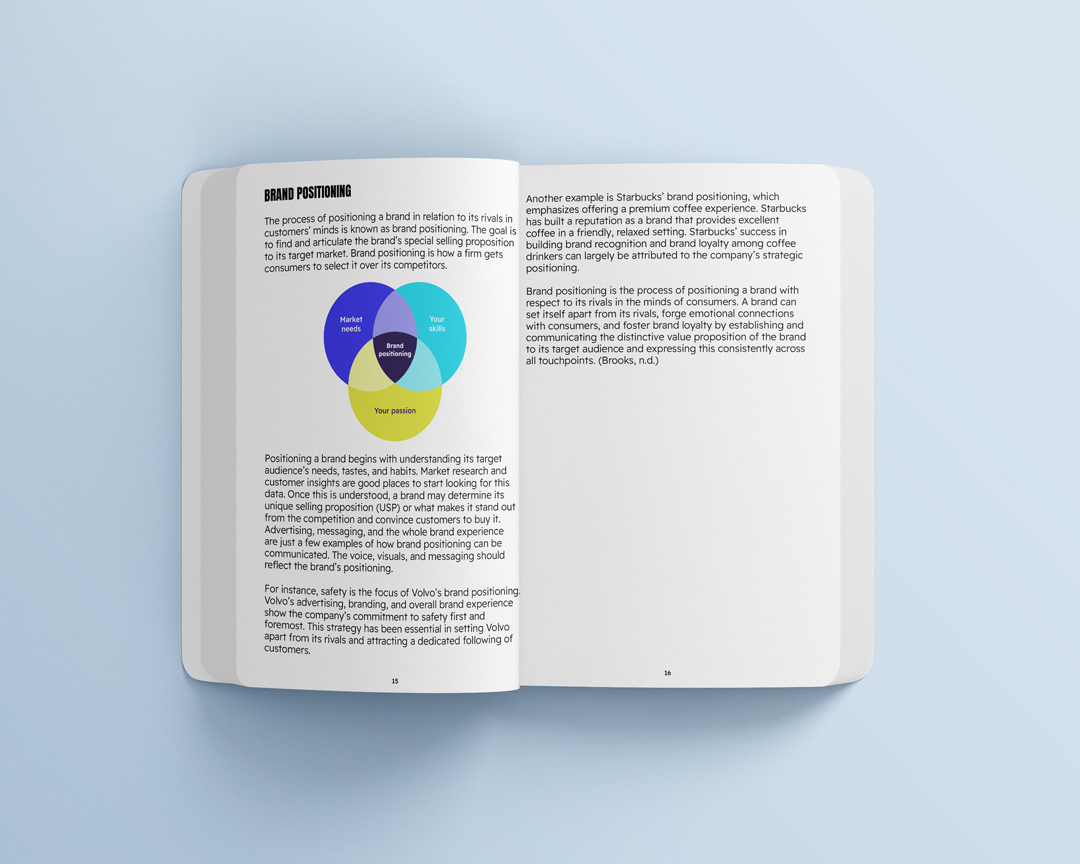
Source: business-explained.com
Building a strong brand isn’t just about creating a logo and a catchy slogan; it’s about consistently delivering value and fostering meaningful relationships with your audience. To ensure your brand development efforts are paying off, you need a robust system for measuring success. This involves setting clear goals, tracking key metrics, and analyzing the data to make informed adjustments along the way.
Without this crucial measurement phase, your brand development strategy risks becoming a shot in the dark.Key Performance Indicators (KPIs) are the cornerstones of effective brand development measurement. They provide quantifiable data that allows you to assess the impact of your strategies and identify areas for improvement. Choosing the right KPIs depends on your specific goals, but some common and crucial indicators are essential for understanding your brand’s overall health and trajectory.
Key Performance Indicators for Brand Development
Selecting the right KPIs is crucial for effective measurement. A balanced scorecard approach, considering financial, customer, internal processes, and learning & growth perspectives, offers a holistic view. For example, a KPI focused on financial performance might be “increase in revenue attributable to brand initiatives,” while a customer-focused KPI could be “net promoter score (NPS).” Internal process KPIs could include “efficiency of brand asset creation” and “time to market for new brand campaigns.” Finally, learning & growth KPIs might include “employee satisfaction with brand guidelines” and “effectiveness of brand training programs.” By tracking a diverse range of KPIs, you gain a comprehensive understanding of your brand’s performance across various dimensions.
Monitoring Brand Awareness and Perception
Understanding how your target audience perceives your brand is paramount. Methods for monitoring brand awareness include surveys, social listening, and analyzing search engine data. Surveys directly ask consumers about their awareness of your brand, while social listening tools track mentions of your brand across various social media platforms. Analyzing search engine data, particularly Google Trends, reveals search volume for your brand and related s, providing insights into consumer interest and search behavior.
To gauge brand perception, consider employing qualitative research methods such as focus groups and in-depth interviews to understand consumer opinions, feelings, and associations with your brand. Quantitative methods like brand tracking studies, using surveys to assess brand attributes and compare them against competitors, can provide valuable data on brand perception.
Measuring Customer Loyalty and Engagement
Customer loyalty and engagement are vital indicators of brand success. Measuring customer loyalty can involve calculating customer lifetime value (CLTV), which predicts the total revenue a customer will generate throughout their relationship with your brand. Repeat purchase rate, measuring the percentage of customers who make multiple purchases, is another key metric. Engagement is measured through metrics such as website traffic, social media interactions (likes, shares, comments), customer reviews, and participation in brand-related events.
A high level of customer engagement signals a strong brand connection and suggests a loyal customer base. Analyzing customer feedback through surveys and reviews helps identify areas for improvement and enhance customer loyalty.
Analyzing Brand Development Data and Making Adjustments
Regularly analyzing your brand development data is crucial for making data-driven decisions. This involves compiling data from various sources – surveys, social media, website analytics, sales figures – into a comprehensive report. This report should clearly present key findings, highlighting areas of strength and weakness. For example, a decrease in brand awareness might necessitate a review of your marketing strategies, while low customer engagement could signal a need for more interactive content and customer relationship management initiatives.
The analysis should lead to specific, actionable recommendations for improvement. These recommendations should be incorporated into your brand development strategy to ensure continuous improvement and growth. For example, if customer surveys reveal dissatisfaction with customer service, implementing improved training programs and streamlining processes can directly address this issue.
Long-Term Brand Development
Building a successful brand isn’t a sprint; it’s a marathon. Initial brand development lays the foundation, but long-term success hinges on continuous maintenance, adaptation, and evolution. Ignoring this crucial aspect can lead to brand stagnation and irrelevance in a constantly shifting market landscape. A proactive approach to long-term brand development ensures your brand remains resonant, competitive, and profitable for years to come.Ongoing brand maintenance and evolution are essential for sustained success.
So, you’re wondering, “What is brand development, and do I need it?” Building a strong brand is crucial for long-term success, and a key part of that is establishing a powerful online presence. Check out this great article on getting it on with youtube to see how video marketing can boost your brand visibility. Ultimately, whether you need brand development depends on your goals, but a strong brand makes all your marketing efforts, including YouTube, much more effective.
Market trends, consumer preferences, and technological advancements are all in constant flux. A brand that fails to adapt risks losing its relevance and market share. This necessitates a dynamic approach, allowing for flexibility and responsiveness to external changes while staying true to the core brand values. Regular brand audits, market research, and competitor analysis are key tools in this process.
Adapting Brand Strategy to Changing Market Conditions
Adapting a brand strategy requires a keen understanding of market dynamics and consumer behavior. This involves monitoring trends, analyzing data, and actively seeking feedback. For example, a brand heavily reliant on physical retail might need to invest in e-commerce capabilities to cater to the growing online shopping trend. Similarly, a brand whose messaging was once considered progressive might need to refine it to align with evolving societal norms.
The key is to be agile and proactive, anticipating changes rather than reacting to them after the fact.
Examples of Brands that Successfully Adapted Over Time
Many brands have demonstrated the importance of adaptation. Consider Coca-Cola, which has maintained its core brand identity while adapting its product offerings and marketing strategies to different cultures and changing consumer preferences. Their introduction of Diet Coke and Coke Zero exemplifies this flexibility. Similarly, Lego, initially a simple wooden toy manufacturer, has successfully adapted to the digital age by incorporating interactive elements and online communities into its brand experience.
These examples highlight the importance of balancing brand heritage with a willingness to evolve.
A Plan for Continuous Brand Development and Improvement
A robust plan for continuous brand development involves several key steps. First, establish clear brand goals and metrics for success. These goals should be measurable and aligned with overall business objectives. Next, conduct regular brand audits to assess the current state of the brand and identify areas for improvement. This includes analyzing brand perception, customer feedback, and market trends.
Based on these assessments, develop specific strategies for improvement, focusing on areas like product innovation, marketing campaigns, and customer service. Finally, implement a system for monitoring and evaluating the effectiveness of these strategies, allowing for adjustments and refinements as needed. This cyclical approach ensures continuous improvement and adaptation to market conditions.
Last Point

Source: slideteam.net
Ultimately, the question of whether or not you need brand development depends on your specific goals and resources. However, neglecting this crucial aspect can severely limit your potential for growth and long-term success. Investing in a strong brand is an investment in your future, ensuring your business not only survives but thrives in a competitive marketplace. So, take the time to assess your current brand standing, consider the strategies Artikeld here, and make an informed decision that will propel your business forward.
FAQ Overview
What’s the difference between brand development and brand management?
Brand development is the initial process of creating your brand – defining its values, personality, and visual identity. Brand management is the ongoing process of maintaining and evolving your brand over time.
How long does brand development typically take?
It varies greatly depending on the complexity of your business and your goals, but it can range from a few weeks to several months.
How much does brand development cost?
Costs vary wildly depending on the scope of work, from DIY options to hiring agencies. Expect to invest significantly if you’re aiming for a comprehensive overhaul.
Can I do brand development myself?
Yes, but it requires significant time, research, and potentially some design skills. Consider hiring professionals for complex aspects like logo design if you lack expertise.
